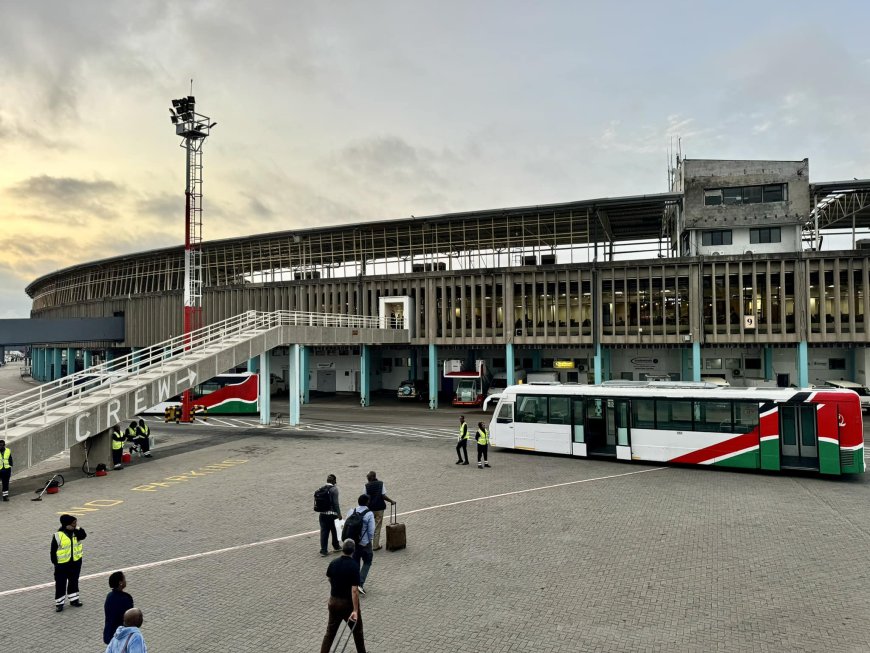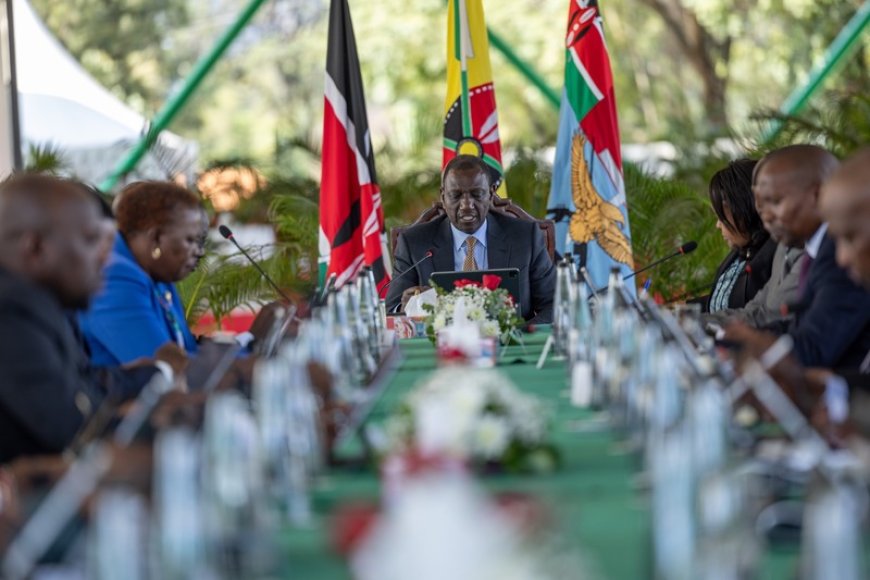Cabinet Approves Top-To-Bottom Upgrade Of JKIA
The comprehensive plan encompasses upgrades to various critical components of JKIA, including the passenger terminal, runway, taxiway, apron, and airside facilities.

The Cabinet on Tuesday, June 11 considered and approved the Medium Term Investment plan of the Jomo Kenyatta International Airport (JKIA) as President William Ruto's government aims to raise the international standards of the country's biggest airport and challenge airports in Africa and the rest of the world.
The comprehensive plan encompasses upgrades to various critical components of JKIA, including the passenger terminal, runway, taxiway, apron, and airside facilities.
Some key aspects related to JKIA's medium-term investment plan include the Kenya Airspace Master Plan which outlines the evolution and associated investments to be made by the Kenya Civil Aviation Authority (KCAA) in Air Navigation Services (ANS) over the next 15 years.
The objectives include global and regional consistency, legal/regulatory considerations, and stakeholder expectations. The plan covers operational evolutions, technical improvements, and human resources development.

President William Ruto during a Cabinet meeting which was attended by his deputy, Rigathi Gachagua and cabinet secretaries at State House, Nairobi on June 11, 2024. /PCS
"The meeting also considered and approved the JKIA Medium Term Investment Plan that includes the upgrade of the passenger terminal, runway, taxiway, apron and airside facilities in keeping with the global aviation trends," read a despatch of the Cabinet meeting.
This intervention is arguably a crucial plan given that on the same day, operations at JKIA's runway were suspended temporarily owing to a Kenya Airways cargo aircraft that stalled while landing at the airport.
Even though the aircraft was towed to safety, the disruption on the airport's only runway caused chaotic scenes as several incoming flights had to be diverted, and others were prevented from taking off.
JKIA has been no stranger to closures affecting the only runway serving the international airport. On April 17, 2023, a cargo plane, a Boeing 747-400 belonging to Singapore Airlines, could not take off from JKIA due to tyre damage, a stall that prompted the shutdown of the runway for close to seven hours.
Meanwhile, the Cabinet also considered and approved the National Aviation Policy which seeks to maximise the contribution of the aviation sector to Kenya's growth by enhancing connectivity at both the national and international levels and also aimed at fortifying the intricate relationship between tourism and aviation.
The newly approved policy not only enhances Nairobi's position as an aviation hub but also endeavours to harness the full potential of the aviation sector in propelling Kenya's economic growth.
By prioritising connectivity on both domestic and international fronts, the policy sets out to amplify the sector's contribution to the nation's prosperity.
"Cabinet noted the aviation ecosystem in Kenya is robust, but pointed out that it was imperative to enhance the capacity of Kenya's international airports to meet existing and projected demand which is estimated to rise to 42.1 million passengers a year by 2050," added the despatch.
Kenya also unveiled its National Aviation Safety Plan (NASP) as part of its commitment to enhancing air travel security which was developed in consultation with national operators and other stakeholders.
Aligned with the International Civil Aviation Organization's (ICAO) Global Aviation Safety Plan (GASP), the NASP outlines objectives, strategic priorities, and safety actions to be taken over three years (2023 to 2025).
Key elements of the plan include identifying national safety issues, setting aviation safety goals and targets, implementing safety enhancement initiatives (SEIs), and collaborating with industry stakeholders and agencies responsible for safety oversight. The NASP complements Kenya's State Safety Programme (SSP) Document.







